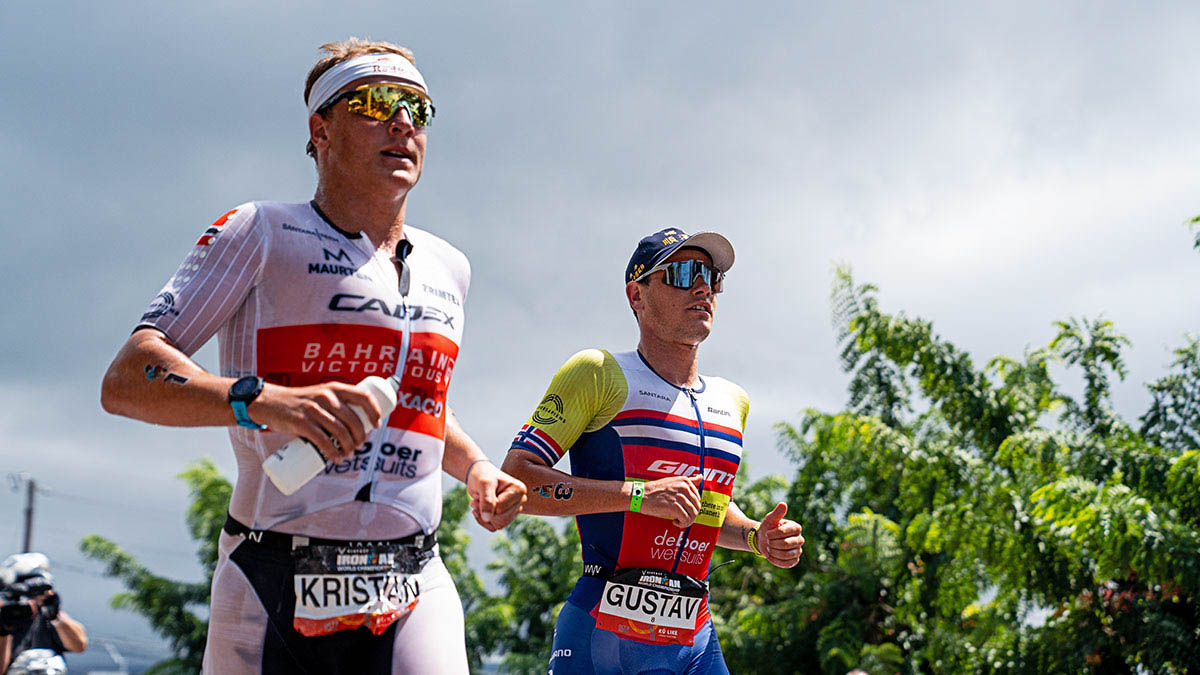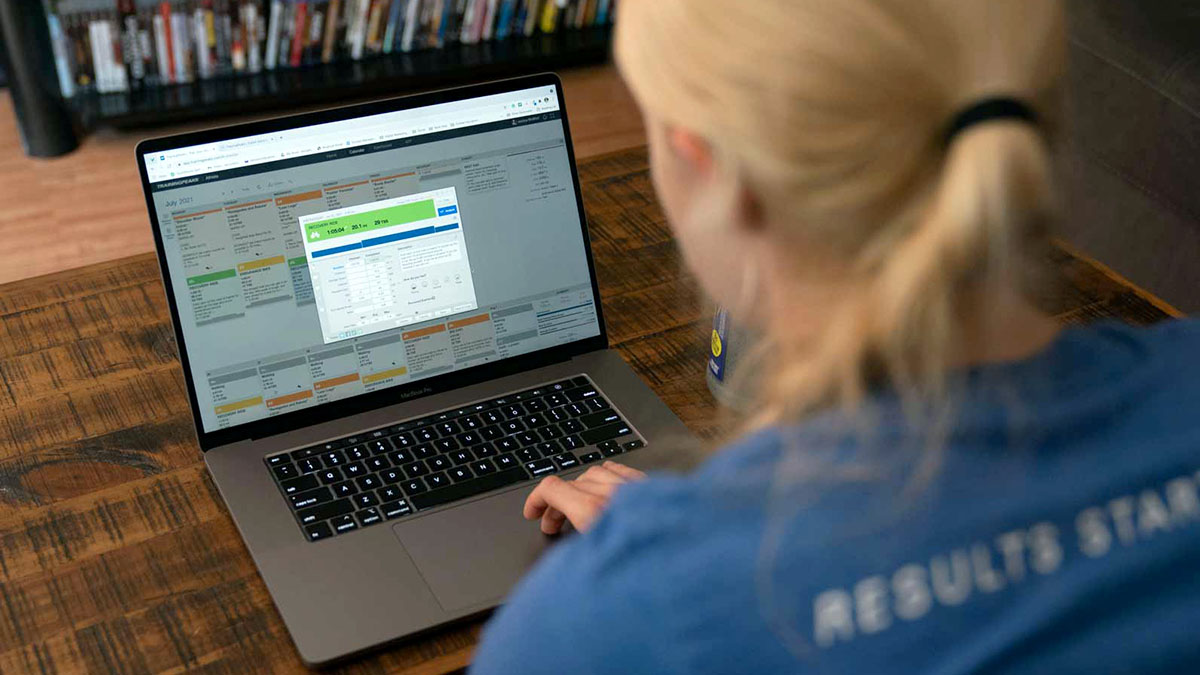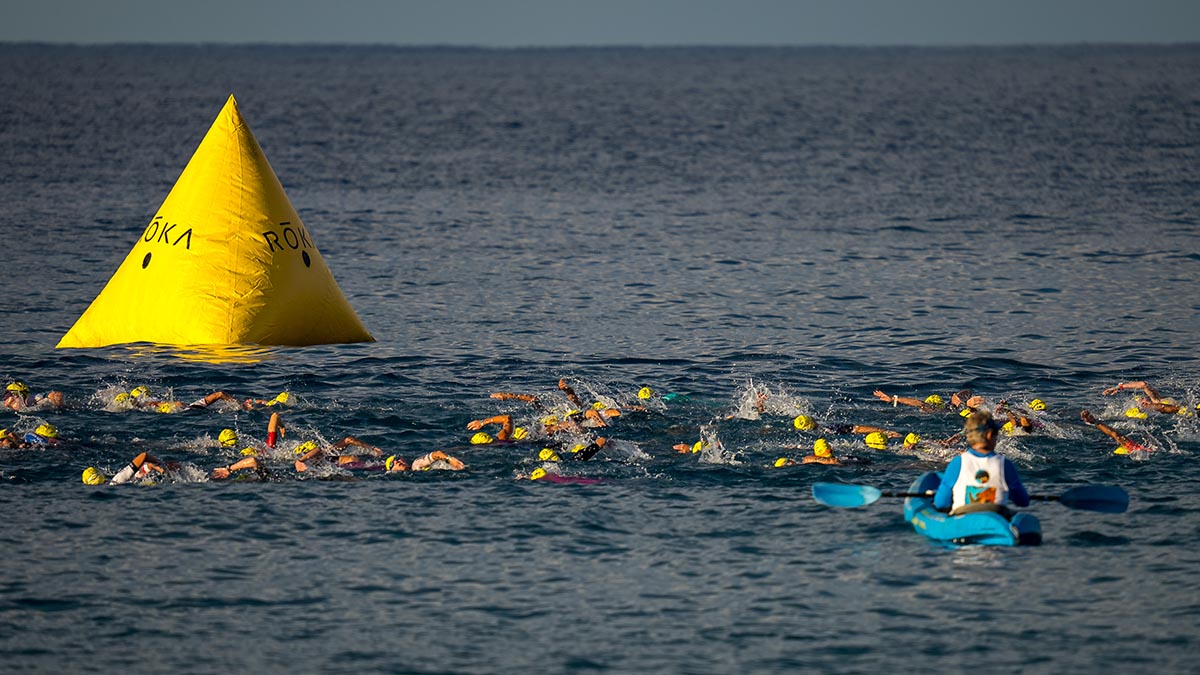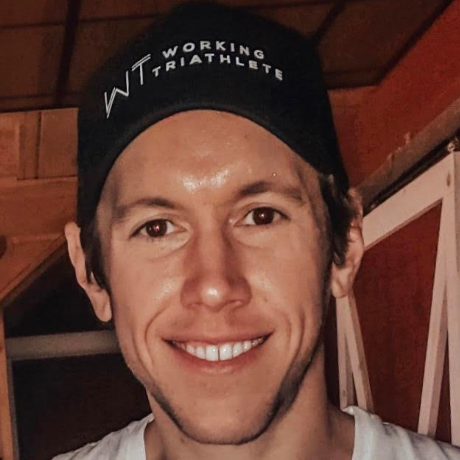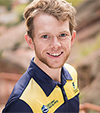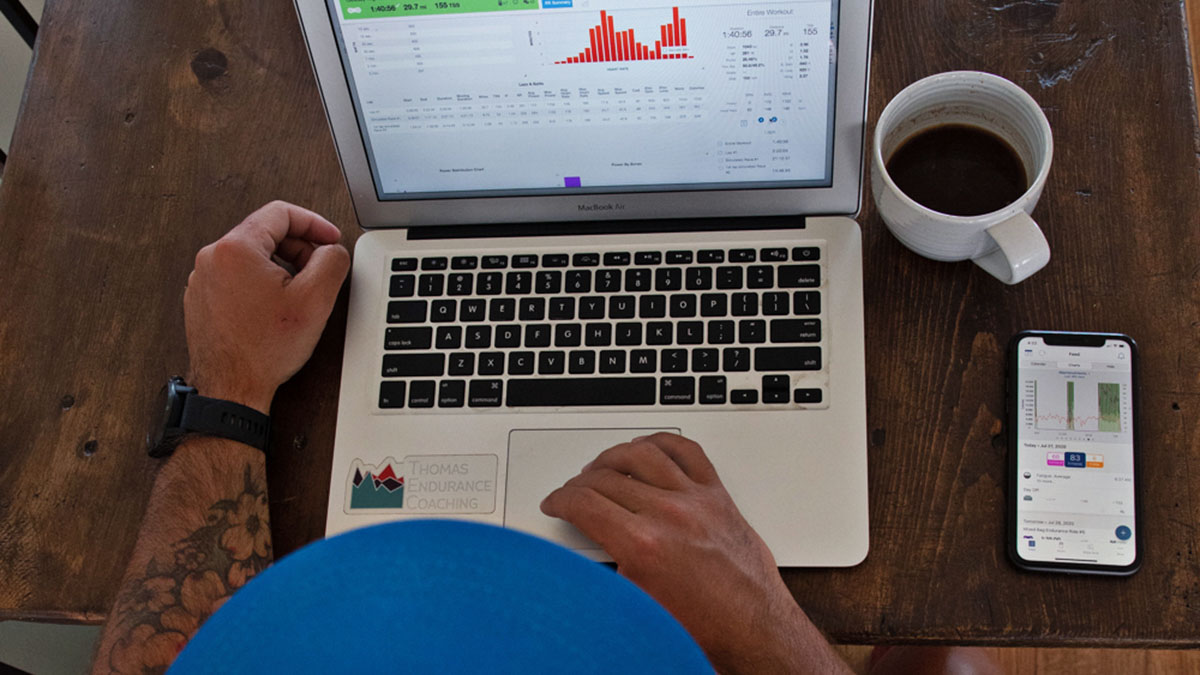Although Kristian Blummenfelt felt broken after the 2022 Ironman Kona World Championship, he still finished third, while compatriot and reigning 70.3 champion Gustav Iden took the top spot. Blummenfelt had also had a historic year. Claiming the Ironman world title when the race temporarily moved to St. George, Utah, becoming the world record holder and the first person to break seven hours in a full Ironman, then downshifting to sprint triathlon to win Olympic gold in Tokyo. In this article, we’ll explore the so-called Norwegian training method that has propelled these teammates to the top of the global triathlon rankings.
Several people have been credited with the success of Norway’s triathletes, but one name that usually flies under the radar is Roger Gjelsvik. He recruited Blummenfelt to Tertnes Toppidrett Sports Academy in Bergen after seeing him win a regional triathlon at age 14. Iden enrolled at the school two years later, along with Lotte Miller and Jörgen Gundersen. The program hired sports scientist Arild Tveiten to develop this hotbed of junior talent through a data-driven, testing-centric approach, with the aim of medaling at the Tokyo Olympics or before.
According to a Red Bulletin profile by Brad Culp, “Blummenfelt was tasked to do a huge amount of easy bike and run volume… he’s been doing Ironman-like mileage since he was 17.”[1] The same goes for his teammates. In an article about how he applied the Norwegian method to his own training, exercise physiologist Markus Bakken described the approach as having “main pillars of high volume at low intensity and a substantial amount of work at lactate threshold (LT2).”[2]
Speaking with Dirk Friel for the “TrainingPeaks CoachCast” podcast, Tveiten added that at the core of the philosophy is that Norwegian triathletes “pay attention to the intensity control and do the right amount of training at the right time.”[3]
Slowing it Down
In 2015, entrepreneur-turned-sports scientist Olav Aleksander Bu was introduced to Tveiten by his mentor Dr. Ørjan Madsen, a former Olympic swimmer who became an endurance training pioneer. Bu began looking at the training data from Blummenfelt, Iden, and the rest of Norway’s elite triathletes, finding insights from the latest research and identifying trends that would inform more precise training protocols.
Clearly, Blummenfelt was already elite, finishing 13th at the Rio Olympics in 2016 at just 22 years old. But Bu and Tveiten realized that the prodigy and his talented teammates still had a lot of room for improvement as they began looking toward the next Olympics and global 70.3 and full Ironman events.
“If I had to summarize it in a few words, I think the biggest change that happened from Rio to Tokyo would be individualization and intensity control,” Bu told Jonathan Turner at Tri247.[4] He realized that while Blummenfelt could drop the hammer when needed, he often went out too hard and fast. This burned through his glycogen stores and pushed him beyond his lactate threshold too early, leading to fatigue in the latter part of the race.
While other coaches were preaching more speed work, Bu and Tveiten realized they needed to go the other way with Blummenfelt and his training partners. “So I said we probably have to start to swim slower, bike slower, make the workout models a little different,” Bu said in the Tri247 interview. “I made a strategy for how to implement all these kinds of things gradually into the schedule.”
In an episode of the Physical Performance Show, Bu said that this shift resulted in a change to the programming model for Blummenfelt and his training partners: “From the Olympics, where it was more or less threshold-oriented, it has maybe become more base or pyramidal-oriented…as you go down in intensity, you get more and more volume.”[5] He also noted that while a training week can be polarized, this is not the pattern that the team typically follows.
What are the results of this switch in training philosophy? More sustained power throughout a race, the ability to move up from half to full Ironman distance in a surprisingly short timeframe, and less fatigue heading into the final miles of the run. The late-race benefits of the Norwegian method were in full evidence when Blummenfelt pulled away from Alex Yee in the Tokyo triathlon and most recently at Kona, where Iden reeled in and passed Sam Laidlow to claim his first Kona title. Blummenfelt also showed his ability to pour on the pace late when he overcame Joe Skipper’s lightning-fast bike leg to win the Sub7 challenge.
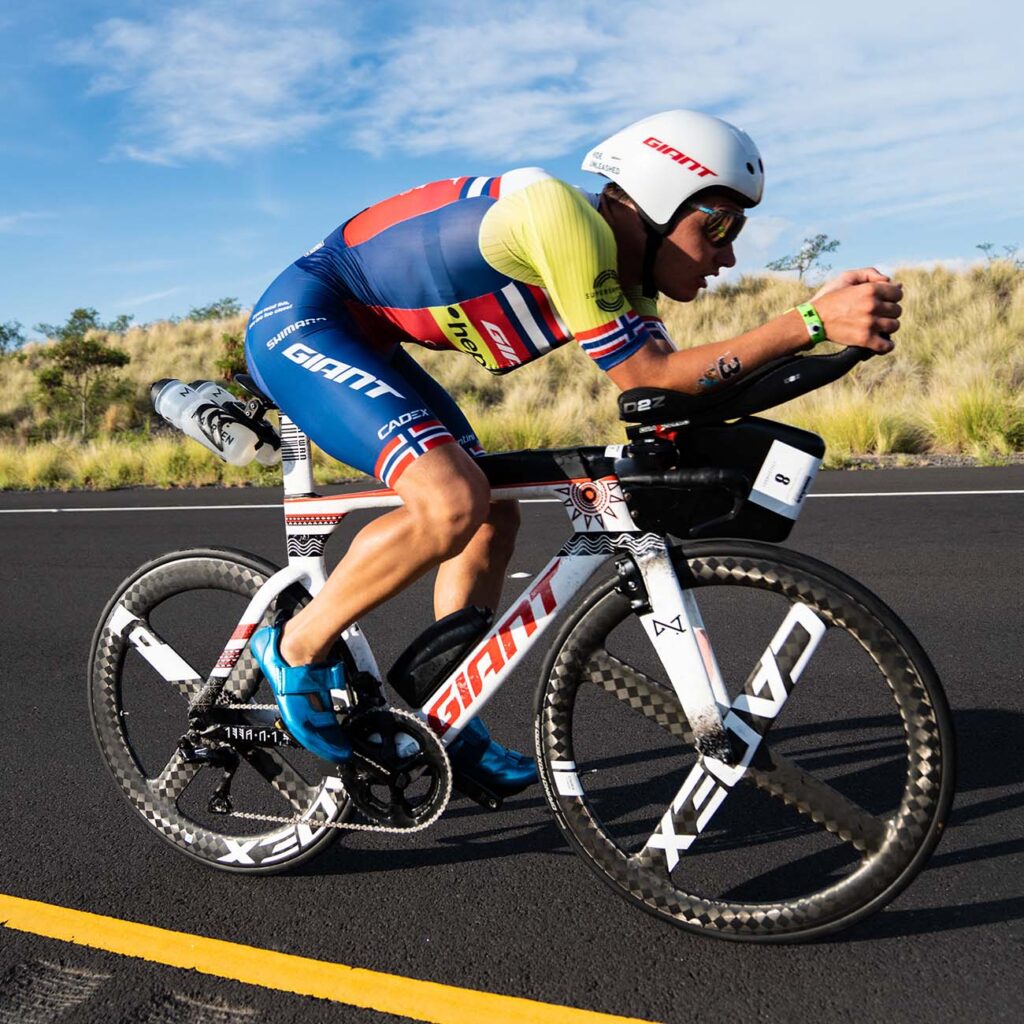
Combining Training Log Data and Lab Testing
The individualization that Bu referred to initially began with insights gleaned from Norwegian triathletes’ historical race and training data. But to confirm their hypotheses about balancing volume, intensity, and density over the course of a full Olympic quadrennial cycle and create personalized plans for each racer, the coaching staff needed to combine this information with physiological testing.
“We spend some time in the lab doing lactate testing and assessing maxes in all disciplines,” Tveiten said in episode 223 of Scientific Triathlon’s “That Triathlon Show.” “And we are paying much more attention to individualization of the training based on what we see they need to work on during the tests.”[6]
Such assessments already included the usual power output, time to exhaustion, heart rate, power and VO2 max measurements that many triathlon coaches utilize. But Bu went further by attaching up to 20 sensors to Blummenfelt, Iden and the rest, according to The New York Times.[7] A mask captured how much oxygen they consumed and the carbon dioxide they emitted while doing time trials in the lab. It allowed the sports science team to gauge their overall energy usage and how much of it came from carbohydrates, fats, and protein (known as indirect calorimetry).
Another Red Bulletin profile shared that using a Moxy monitor allowed Bu to track how his athletes’ muscles utilized oxygen. This helped him tailor each type of training session to hit specific metabolic levels instead of simply using timing or wattage goals in isolation.[8]

Monitoring in Real Time and Training for Heat and Altitude
Every athlete’s output is dialed to different intensity levels to meet the individualized targets that the performance coaches and sports scientists set using lab testing. They then make day-to-day tweaks based on actual values from each session recorded in TrainingPeaks logs and diaries, plus recent race results.
Unlike other training groups that are only assessed periodically, the Norwegian method calls for triathletes to frequently monitor their own lactate level in the field with finger prick testing. The data-driven personalization that Norway’s world-beating triathletes utilize also extends to the volume of every workout. Tveiten gave the example of Iden doing eight sets of six-minute intervals in a specific workout rather than the usual six that the rest of the training group might perform.
Several times a year, the Norwegian triathletes undergo testing in conditions that mirror what they will experience during their biggest races. Tveiten shared that the team did a camp in Thailand in preparation for Tokyo, where the heat and humidity replicated that they would likely face in the Olympics.
Blummenfelt augmented this by turning part of his apartment into a heat training room. The New York Times story revealed that core body temperature sensors supplied by a small Norwegian company helped Bu and Tveiten make the strategic decision for Blummenfelt to back off the pace on the bike to stay cooler and then hit the accelerator in the run. This was a hard-won insight, as the Thailand camp proved too grueling.
Since 2013, the team has been doing similar simulations with altitude before races that feature a lot of elevation gain and drop, including between two and four camps per year in Spain’s Sierra Nevada and Font-Romeu, France. Often, the paces of higher volume sessions are even slower than at sea level so as not to overtax the racers’ systems as they acclimatize or send lactate levels too high. This high-elevation training helped prepare Blummenfelt to win the World Championship in St. George in 2021 on his debut and Iden to crush the 2022 Kona course.
Integrating Intervals
While the base of the Norwegian training group’s pyramid is volume, this isn’t to say that they never train fast. After all, you can’t set the Ironman 70.3 world record twice as Blummenfelt did, win two World Championships in that distance like Iden, or speed over the finish line to break Jan Frodeno’s all-time Ironman mark ala Blummenfelt in Cozumel unless you have a top gear.
This is why the team often does six or seven interval sessions per week. Some of these are brief sprints, and others are longer efforts around the lactate threshold. But for both, the intensity is capped – unlike with many athletes who are encouraged to go all-out in their speed training. Closer to races, Bu and Tveiten increase the usual one to two minutes of rest between intervals to allow for increased intensity.
Twice a week, there are two interval sessions on a single day. Blummenfelt, Iden, and teammates like Casper might focus on longer cycling intervals in the morning and shorter, slightly higher-intensity running or swimming ones in the afternoon. The key is not overdoing the first session and avoiding the temptation to press the gas pedal too hard in the second, as this would compromise recovery for the following day’s volume-focused training.
“An athlete who diligently follows the Norwegian model could almost always do their intervals faster,” David Roche wrote in Trail Runner Magazine. “But by going faster, they’d be neglecting or reversing some of the potential aerobic benefits, particularly those involving lactate shuttling and aerobic development.”[9] He suggested doing TrainingPeaks co-founder Joe Friel’s lactate threshold heart rate test to inform pacing for threshold intervals for those who don’t have access to blood lactate monitoring.[10]
Another secret to performing well in intervals is not pushing too hard during long- and middle-distance workouts. This doesn’t just apply to elite triathletes but also masters competitors who are trying to fit 10 hours or less of weekly training into a busy lifestyle. “That normal age group can do a lot of the easy at a little higher intensity, but you should still be fresh to do the intervals,” Tveiten said in his That Triathlon Show interview.
Your athletes might not be able to train alongside Blummenfelt and Iden in person, but they will soon be able to take advantage of the Norwegian training method. Endurance.Biz reported that Bu has co-founded Entalpi, which will provide an app and analysis platform starting in the summer of 2023.
“By measuring and analyzing data such as hydration, calorie intake, lactate, pulse, glucose, watts, training volume and intensity, sleep and rest, etc., you can adjust and optimize in completely new ways, which in turn gives athletes completely new competitive advantages,” Bu said in the story. “We have only seen the start of this digital revolution.”[11]
And as terrifying as it might be for the rest of world triathlon, the Norwegian method takeover is just beginning.
References
[1] Brad Culp, “Nothing is Impossible,” The Red Bulletin, September 20, 2022, available online at https://www.redbull.com/us-en/theredbulletin/kristian-blummenfelt-triathlete-norway-interview.
[2] Markus Bakken, “The Norwegian Model of Lactate Threshold Training and Lactate Controlled Approach to Training,” MariusBakken.com, available online at https://www.mariusbakken.com/the-norwegian-model.html.
[3] Dirk Friel, “Creating the Perfect Recipe for Triathlon Olympic Gold with Arild Tveiten,” TrainingPeaks, available online at https://www.trainingpeaks.com/coach-blog/creating-the-perfect-recipe-for-triathlon-olympic-gold-with-arild-tveiten.
[4] Jonathan Turner, “Trusting the Numbers: Bu on How Norway Honed its Tri Superstars,” Tri247, February 23, 2022, available online at https://www.tri247.com/triathlon-news/elite/olav-aleksander-bu-training-blummenfelt-iden-stornes.
[5] “Olav Aleksander Bu. Triathlon Norway Sports Scientist & Elite Coach, ‘The Science of Triathlon,’” The Physical Performance Show, available online at https://physicalperformanceshow.com/episode/olav-aleksander-bu.
[6] Mikael Eriksson, “Arild Tveiten – Coach of Kristian Blummenfelt, Gustav Iden and Casper Stornes on Triathlon Training the Norwegian Way | EP#223,” March 2, 2020, Scientific Triathlon, available online at https://scientifictriathlon.com/tts223.
[7] Adam Skolnick, “Kristian Blummenfelt Is the Triathlon’s Data-Driven Future,” The New York Times, January 18, 2022,available online at https://www.nytimes.com/2022/01/18/sports/triathlon-kristian-blummenfelt.html.
[8] Sindre Vian, “Inside Kristian Blummenfelt’s Master Plan to Make Kona History,” March 10, 2022, The Red Bulletin, available online at https://www.redbull.com/nz-en/kristian-blummenfelt-a-new-era-kona-ironman-training.
[9] David Roche, “The Secrets—and Science—Behind the Norwegians’ Training and Racing Success,” Trail Runner Magazine, February 9, 2022, available online at https://www.triathlete.com/training/the-secrets-and-science-behind-the-norwegians-training-and-racing-success.
[10] Joe Friel, “Joe Friel’s Quick Guide to Setting Zones,” TrainingPeaks, available at https://www.trainingpeaks.com/learn/articles/joe-friel-s-quick-guide-to-setting-zones.
[11] Gary Roethenbaugh, “Entalpi Rolling Out ‘The Norwegian Method’ Via New Coaching Platform,” Endurance.biz, September 7, 2022, available online athttps://endurance.biz/2022/industry-news/entalpi-rolling-out-the-norwegian-method-via-new-coaching-platform.
